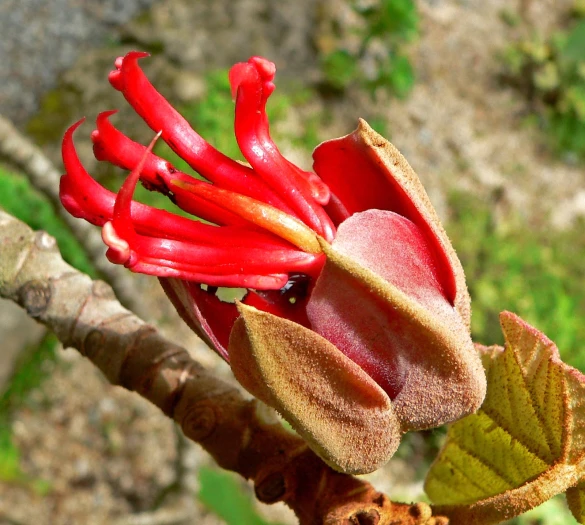Monkey’s Hand Tree
(Chiranthodendron pentadactylon)
Monkey’s Hand Tree (Chiranthodendron pentadactylon)
/
/

Stan Shebs
CC BY-SA 3.0
Image By:
Stan Shebs
Recorded By:
Copyright:
CC BY-SA 3.0
Copyright Notice:
Photo by: Stan Shebs | License Type: CC BY-SA 3.0 | License URL: https://creativecommons.org/licenses/by-sa/3.0 | Uploader: Stan Shebs | Publisher: Wikimedia Commons | Title: Chiranthodendron_pentadactylon_4.jpg | Notes: {{Information |Description={{en|1=Chorizema cordatum Range Botanic Gardens, Dee Why, Australia}} |Source={{own}} |Author=[[User:Poyt448|Poyt448]] Peter Woodard |Date=2010-08-22 |Permission=ok |other_versions=no }} [[Category:Flora of Western Aus |


























Estimated Native Range
Climate Requirements
| • Precipitation | 44" - 52" |
| • High Temp. | 72°F - 86°F |
| • Low Temp. | 39°F - 55°F |
Summary
Chiranthodendron pentadactylon, commonly known as Monkey’s Hand Tree, is an evergreen tree native to the cloud forests of Central America and Mexico. This species can reach heights of 10.5–27.5 m (34–90 ft) and is known for its striking flowers and large, lobed leaves. The leaves are dark green, with a brown indumentum on the underside, and can be quite large, adding to the tree’s tropical appearance. The unique, claw-like flowers are the most notable feature, appearing in late spring to early summer. They are composed of five long, upward-curving stamens that are bright red, resembling a monkey’s hand, hence the common name. Following flowering, the tree produces an oblong, five-lobed fruit capsule measuring 7.5–10 cm (3.0–3.9 in) long, which contains black seeds.
The Monkey’s Hand Tree is valued for its ornamental flowers and foliage, making it a fascinating addition to botanical gardens and exotic plant collections. It is best suited for cultivation in regions with a mild climate similar to its native cloud forest habitat. The tree prefers full sun but can tolerate partial shade, requires low amounts of water once established, and thrives in well-draining soils. While it is not commonly used in urban planting due to its size and specific requirements, it can serve as a specimen tree in larger landscapes. Gardeners should be aware that it may not fruit or flower as prolifically outside of its native range.CC BY-SA 4.0
The Monkey’s Hand Tree is valued for its ornamental flowers and foliage, making it a fascinating addition to botanical gardens and exotic plant collections. It is best suited for cultivation in regions with a mild climate similar to its native cloud forest habitat. The tree prefers full sun but can tolerate partial shade, requires low amounts of water once established, and thrives in well-draining soils. While it is not commonly used in urban planting due to its size and specific requirements, it can serve as a specimen tree in larger landscapes. Gardeners should be aware that it may not fruit or flower as prolifically outside of its native range.CC BY-SA 4.0
Plant Description
- Plant Type: Tree
- Height: 40-60 feet
- Width: 20-30 feet
- Growth Rate: Moderate
- Flower Color: Red
- Flowering Season: Spring, Summer
- Leaf Retention: Evergreen
Growth Requirements
- Sun: Full Sun
- Water: Low
- Drainage: Medium
Common Uses
Natural Habitat
Cloud forests of Central America and Mexico
Other Names
Common Names: Mexican-Hat-Plant, Handbaum
Scientific Names: Chiranthodendron pentadactylon, Cheirostemon platanoides, Chiranthodendron platanoides, Cheirostemon apetalus
GBIF Accepted Name: Chiranthodendron pentadactylon Larreat.